Higher classification Murraya | Genus Murraya Rank Species | |
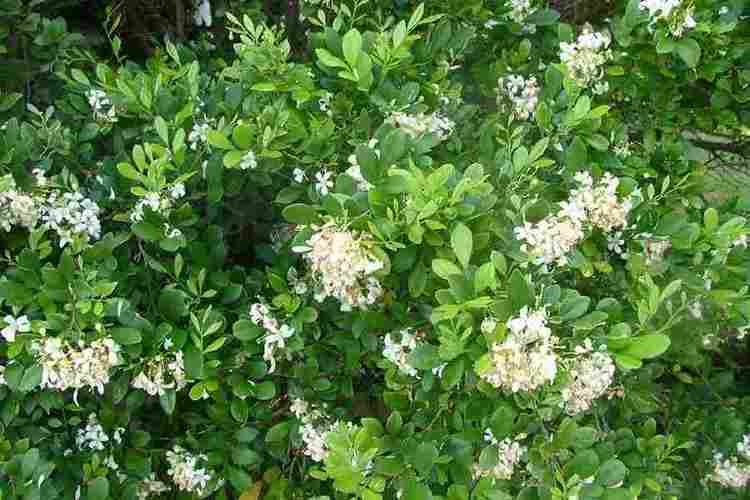 | ||
Similar Murraya, Rutaceae, Millingtonia hortensis, Aglaia odorata, Mimusops elengi | ||
Murraya paniculata kamini mock orange orange jasmine orange jessamine lake view jasmine
Murraya paniculata is a tropical, evergreen plant native to southern China, Taiwan, the Indian sub-continent (i.e. Bangladesh, India, Nepal, north-eastern Pakistan and Sri Lanka), south-eastern Asia (i.e. Cambodia, Laos, Myanmar, Thailand, Vietnam, Indonesia, Malaysia and the Philippines and northern Australia (i.e. the northern parts of the Northern Territory, far northern Queensland and northern Western Australia), bearing small, white, scented flowers, which is grown as an ornamental tree or hedge. Murraya is closely related to Citrus, and bears small orange to red fruit resembling kumquats, though some cultivars do not set fruit.
Contents
- Murraya paniculata kamini mock orange orange jasmine orange jessamine lake view jasmine
- Murraya paniculata seedling in bud
- Common and local names
- Description
- Range
- Uses
- Propagation
- Diseases
- Potential medicinal uses
- References
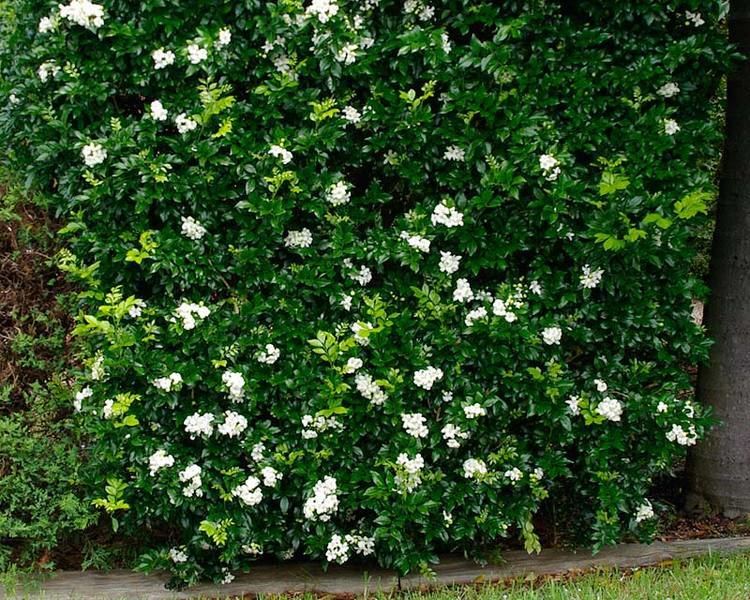
Pretty to look at but Murraya Paniculata (exotica) is recorded as an invasive weed by many Australian councils. It is spread by birds, self-propagates and the roots are also invasive in seach of moisture. It invades natural habitats and is highly ranked on Australia's most invasive weed list. This weed was introduced to areas in Australia and marketed as a easy to grow hedge which, when in flower, is highly allergenic to many of the population. Sufferers experience headache, blocked sinuses and breathing difficulties, etc. It may be in the citrus family but there's nothing healthy about a fully flowering Murraya hedge on a hot summer's night.[1]
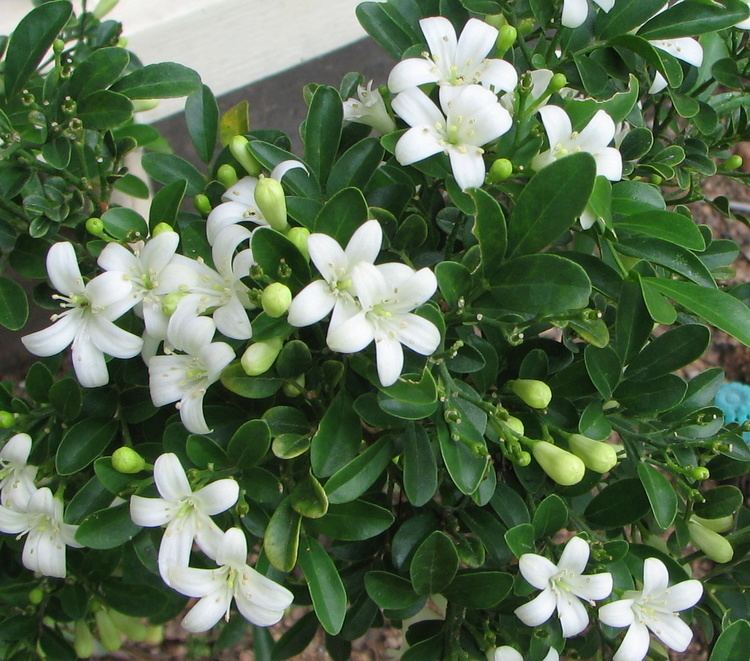
Murraya paniculata seedling in bud
Common and local names
Some of the common names include
Orange jessamine, Chinese box, mock orange, mock lime, satinwood or Lakeview jasmine (mainly in Florida)
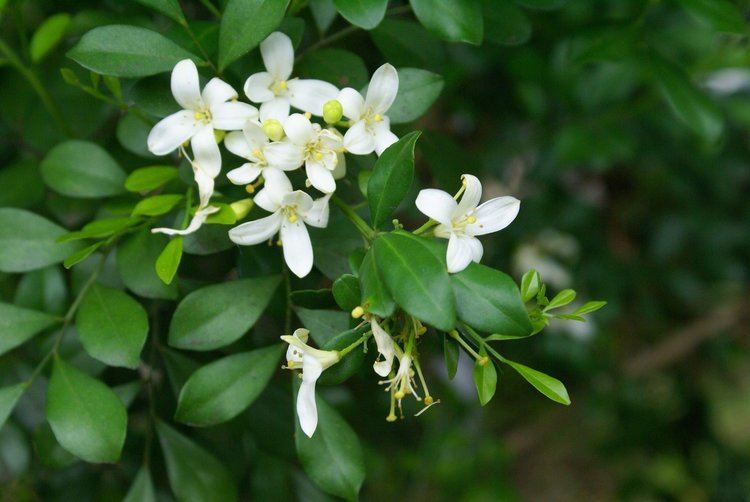
Campeche, México: Limonaria
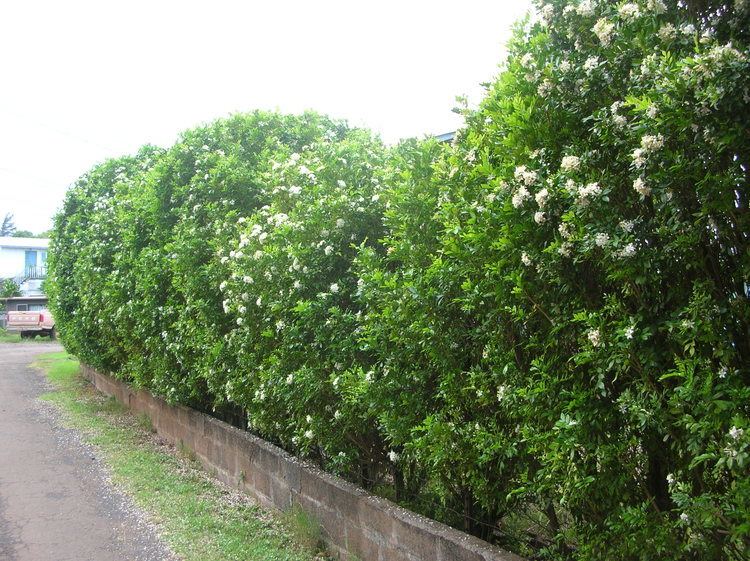
Description
Orange Jessamine is a small, tropical, evergreen tree or shrub growing up to 7 m tall. The plant flowers throughout the year. Its leaves are glabrous and glossy, occurring in 3-7 oddly pinnate leaflets which are elliptic to cuneate-obovate to rhombic. Flowers are terminal, corymbose, few-flowered, dense and fragrant. Petals are 12–18 mm long, recurved and white (or fading cream). The fruit of Murraya paniculata is fleshy, oblong-ovoid, coloured red to orange, and grows up to 1 inch in length.
Range
M. paniculata is a native of South and Southeast Asia, China and Australasia. It is naturalised in southern United States.
Uses
Traditionally, Murraya paniculata is used both in traditional medicine as an analgesic and for wood (for tool handles).
In the West, Murraya paniculata is cultured as an ornamental tree or hedge because of its hardiness, wide range of soil tolerance (M. paniculata may grow in alkaline, clayey, sandy, acidic and loamy soils), and is suitable for larger hedges. The plant flowers throughout the year and produces small, fragrant flower clusters which attract bees, while the fruits attract small frugivorous birds.
Honey bee farms have been known to plant Orange Jessamine near bee hives. Serving not only as food for the bees but as protection from harsh winds. Honey collected from bee hive colonies that collect pollen from orange jessamines, have a tangy sweet orange undertone.
Propagation
The Orange Jessamine is sexually propagated by its seeds. The fruits are eaten by birds, who then pass the seeds out in their stool. It may also be artificially propagated by softwood cuttings.
Diseases
M. paniculata is vulnerable to soil nematodes, scales, sooty mold and whiteflies.
M. paniculata is the preferred host to the insect pest Diaphorina citri, the citrus psyllid. This psyllid is the vector for the citrus greening disease.
Potential medicinal uses
The crude ethanolic extract of leaves of Murraya paniculata has antidiarrhoeal, antinociceptive and anti-inflammatory activities. Yuehchukene, a dimeric indole alkaloid, can be extracted from the root.
